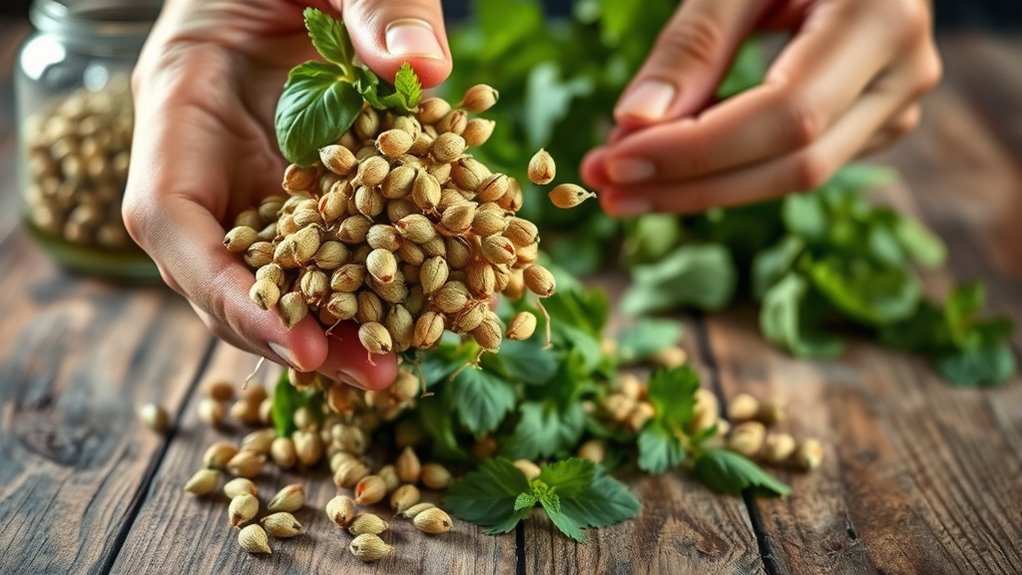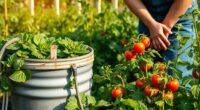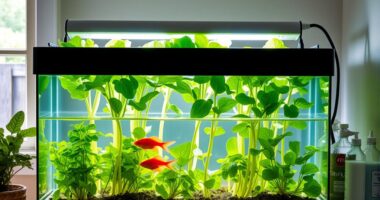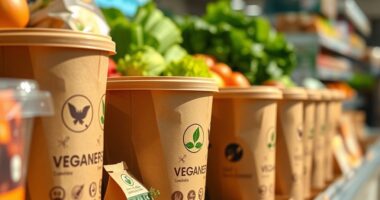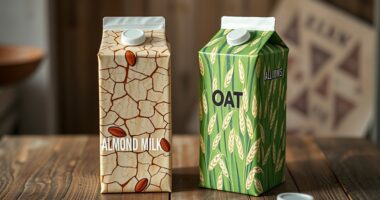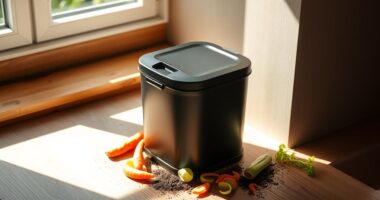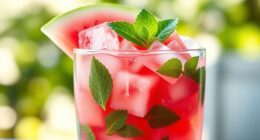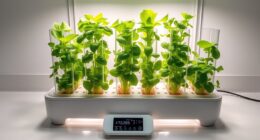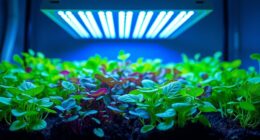To save seeds from grocery herbs like basil and cilantro, wait until the flowers fade and seed heads form, indicating maturity. Gently collect and spread the seeds in a dry, well-ventilated area for thorough drying, then remove any debris. Store the seeds in airtight containers labeled with the herb’s name and harvest date, kept in a cool, dark place. With proper care, you’ll be ready to grow your herbs again—learn more about perfecting each step as you continue.
Key Takeaways
- Wait until herb seed heads are fully mature and dry before harvesting.
- Gently collect seeds, then dry and clean them in a well-ventilated area.
- Store seeds in airtight, labeled containers in a cool, dark, dry place.
- Use proper planting methods, such as direct sowing or starting indoors.
- Maintain optimal storage conditions and handle seeds carefully to preserve viability.
Wait for the Herbs to Flower and Seed Maturity
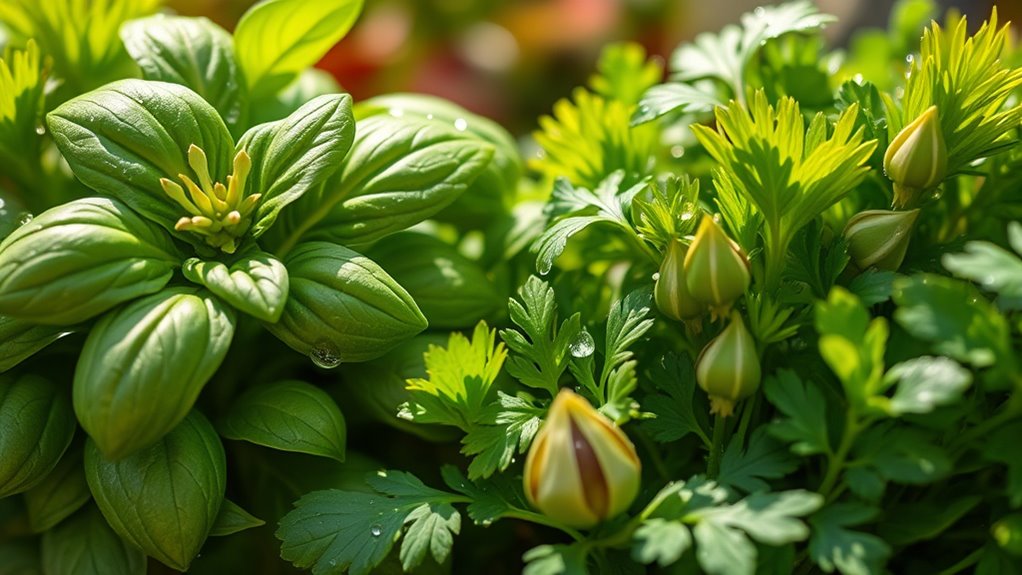
You should wait until your herbs have fully flowered and their seeds have matured before harvesting. During the pollination process, flowers are fertilized, leading to seed development. Harvesting too early can mean immature seeds that won’t grow properly. Observe the plant’s flowers closely; once they fade and seed heads form, it’s a good sign that seed dispersal methods are underway. Seeds won’t be ready until they’re fully developed, often indicated by dryness or color change. Patience guarantees you collect viable seeds capable of germination. Rushing the process risks harvesting immature seeds that won’t grow. Waiting until seed maturity guarantees strong, healthy plants when you sow them again. Proper timing is key to successful seed saving from grocery herbs. Additionally, understanding the life cycle of herbs helps in identifying the optimal harvesting time. Recognizing the seeding process ensures you can better anticipate when seeds are ready for collection. A thorough knowledge of seed dispersal mechanisms can also aid in determining the best moment to harvest. Moreover, being aware of local climate conditions can influence seed maturation and dispersal timing, ensuring better results for your seed saving efforts.
Collect and Dry the Seeds Properly
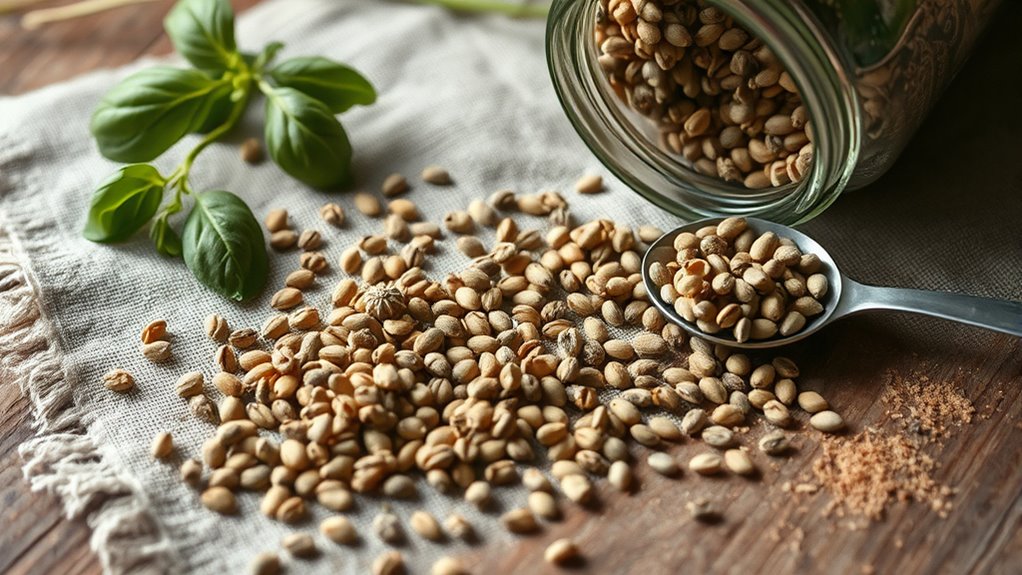
Once the seeds have fully matured, it’s time to carefully collect them for future planting. Gently cut or shake the seed heads into a container, avoiding debris. Next, spread the seeds out in a dry, well-ventilated area to dry completely, which may take a few days. Proper seed drying prevents mold and preserves viability. After drying, perform seed cleaning by removing chaff and broken seeds. Use a sieve or your hands to separate impurities. Remember to seed label each batch with plant name and harvest date for easy identification. Keep your seeds organized and protected. Here’s a quick guide:
| Step | Action | Tips |
|---|---|---|
| Collect seeds | Cut or shake seed heads | Use gloves if needed |
| Dry seeds | Spread in a dry area | Avoid direct sunlight |
| Seed cleaning | Remove debris and chaff | Use a sieve or hands |
Store Seeds in a Suitable Container
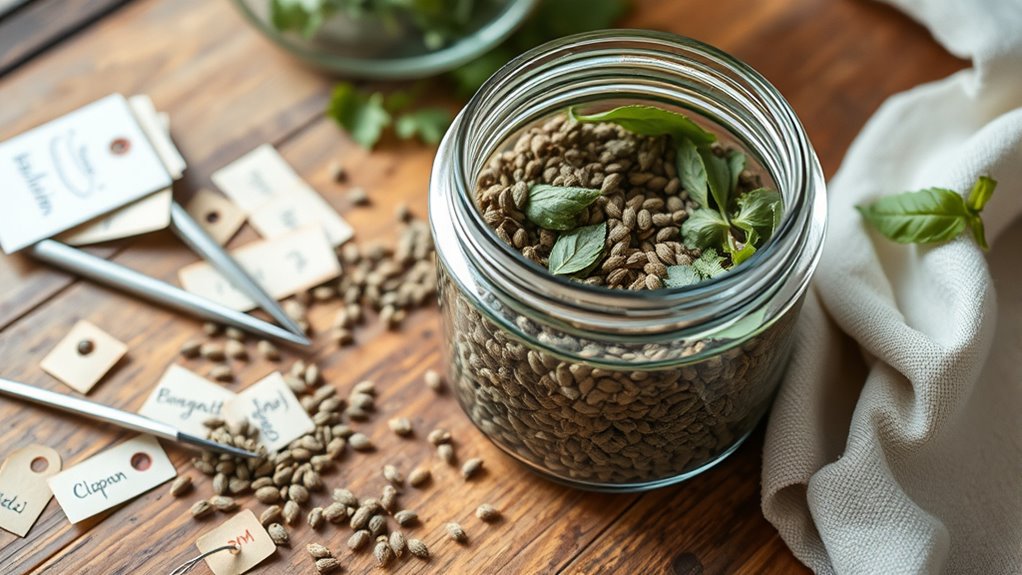
Storing seeds in a suitable container is vital to preserve their viability and prevent spoilage. Choose airtight seed storage containers to protect seeds from moisture, light, and air, which can degrade their quality. Glass jars with tight-fitting lids, metal tins, or plastic containers designed for seed storage work well. Label each container clearly with the herb name and harvest date to keep track of your seed preservation methods. Make certain the containers are dry before filling them to avoid mold and rot. Keep the seeds in a cool, dark, and dry place, such as a pantry or drawer, to extend their shelf life. Proper seed storage containers are indispensable for maintaining seed viability, ensuring successful germination when you’re ready to plant again. Additionally, using moisture control packets inside the containers can help prevent humidity buildup that could compromise seed quality. Incorporating temperature regulation techniques can further enhance seed longevity by maintaining an optimal storage environment. Understanding the effects of temperature and humidity on seed viability can guide you in choosing the best storage conditions for your seeds, especially considering the impact of storage conditions on seed sprouting success.
Plant and Care for Your Saved Seeds
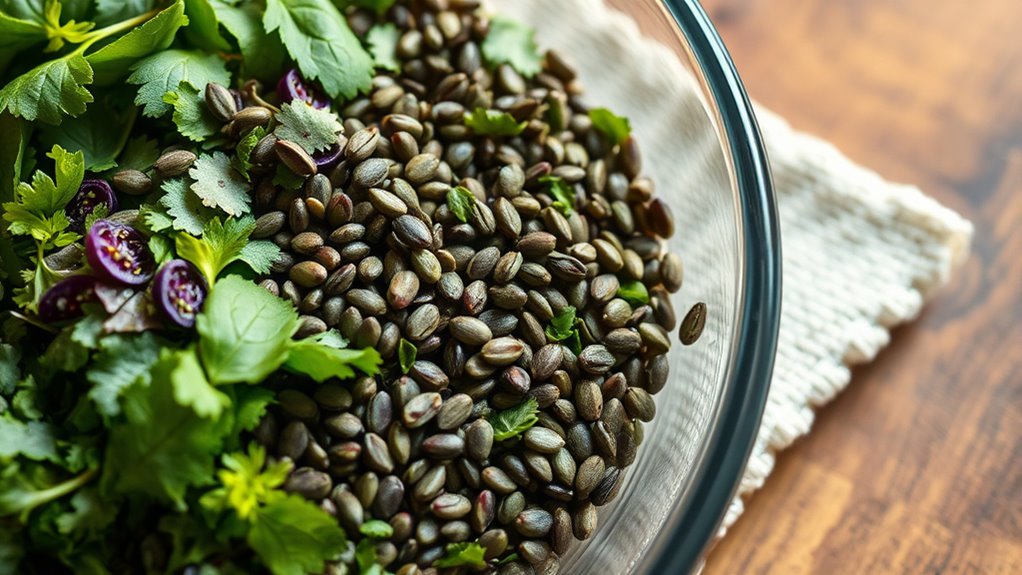
After you’ve stored your seeds properly, planting them at the right time and conditions is essential for successful growth. To maximize seed viability, choose a suitable propagation method, like direct sowing or starting indoors. Ensure the soil is well-draining and rich in nutrients, and keep seedlings in a warm, well-lit spot. Regularly water to keep the soil moist but not waterlogged. Monitor for signs of germination, and thin seedlings if they become crowded. Proper care will boost germination rates and healthy development. Remember, understanding seed viability helps determine the best planting window. Here are some key considerations:
- Timing based on plant-specific growth cycles
- Soil preparation and moisture levels
- Light requirements for young seedlings
- Thinning to prevent overcrowding
- Proper storage techniques to prevent spoilage can significantly impact seed viability and germination success. Maintaining optimal seed quality through proper storage methods ensures higher germination rates and healthier plants. Additionally, being aware of seed dormancy can help in planning the best time for planting to achieve successful sprouting. Recognizing these factors can also help optimize seed viability, leading to more successful gardening outcomes.
Frequently Asked Questions
Can I Save Seeds From Hybrid Grocery Herbs?
You can save seeds from hybrid grocery herbs, but seed viability may be limited. Hybrid seed collection often results in plants that don’t produce true-to-type offspring, so the seeds might not resemble the parent plant. To guarantee better results, focus on saving seeds from open-pollinated or heirloom varieties. Keep in mind, hybrid seed collection can be tricky, and the plants may not have the same qualities as the original herbs.
How Long Do Dried Seeds Remain Viable?
It’s ironic how dried seeds, like tiny time capsules, can outlive their fresher counterparts. Typically, seed viability lasts about 1 to 5 years if stored properly. Keep them cool, dark, and dry to maximize storage conditions. Over time, their ability to sprout diminishes, but if stored well, those humble seeds could surprise you with a new plant long after you’ve forgotten their origin.
Do Different Herbs Require Different Drying Methods?
Different herbs do require different drying techniques for ideal herb seed storage. For example, basil seeds need gentle air drying in a dark, well-ventilated space, while cilantro seeds may require a slightly warmer environment. You should tailor your drying methods based on each herb’s seed characteristics to prevent mold and preserve viability. Proper drying techniques ensure your herb seeds stay viable longer, making your herb seed storage more successful and your garden more productive.
Is It Necessary to Label Seeds Immediately After Collection?
Think of seed storage like organizing a treasure chest—you want each gem labeled clearly to avoid confusion later. Labeling seeds immediately after collection is vital because it guarantees you remember their origin and type, making future planting easier. Without proper labeling, your seeds could become a jumbled mess, making seed storage inefficient. So, always label right away—it’s the key to keeping your garden treasures organized and ready for next season.
Can I Save Seeds From Herbs Grown Indoors?
You can definitely save seeds from herbs grown indoors. For successful seed storage tips, wait until the seed heads are fully mature and dry. Store them in a cool, dark place to preserve viability. Proper indoor herb care helps ensure good seed production. Keep seeds labeled and organized to avoid confusion later. With patience and proper storage, you’ll enjoy growing new herbs from your indoor garden seeds.
Conclusion
Saving seeds from your herbs is like tending a garden of possibilities. With patience and care, you’ll nurture a cycle of life that keeps your herb garden thriving year after year. By following these simple steps, you become the gardener of your own future harvest, planting seeds of abundance and flavor. Embrace the journey, and soon you’ll watch your herb garden grow and flourish, a living proof to your green thumb and dedication.

